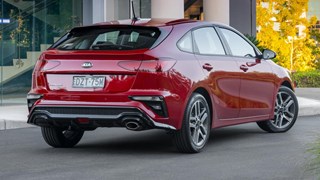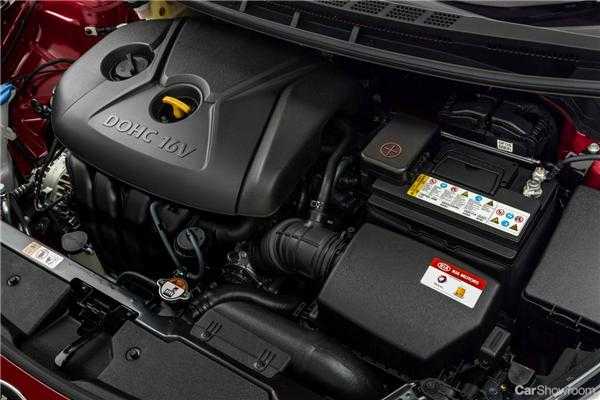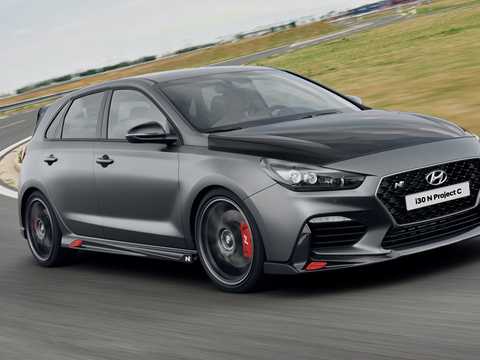Kia’s all-new third generation Cerato sedan has arrived – bigger, more spacious, better engines and better looking. Sounds impressive and it is, especially when you consider the price starts at $19,990 which is just $600 more than the outgoing model.
Kia is certainly on the charge with around 15 new or revised models heading this way before we wrap 2015. Next month the all-new Rondo 7-seat MPV makes its local debut – another great-looking car from Kia which the company says will make MPVs ‘cool’ again.
Kia reckons the all-new Cerato typifies its range which has shifted from ‘available and reliable’ to ‘desirable’ largely thanks to the efforts of star German designer Peter Schreyer. The second generation Cerato has racked-up more than 1.21-million sales globally since it was launched in 2008.
Schreyer’s styling genius plus world-class engineering, a localised ride and handling development program for all models, a five-year warranty and five-year capped-price servicing are just some of the reasons local buyers are turning to Kia. In Australia last year Kia sales rose by 20 per-cent and with three new models arriving this year, 2013 should see similar growth.
Kia Cerato Overview
The good-looking sedan is part of a Kia Cerato ‘triple-play’ this year. Cerato five-door hatchback version arrives mid-year and the stylish Koup three-door arrives in spring.
Kia has launched the all-new Kia Cerato sedan with its familiar model names – entry-level, ‘S’, mid-grade ‘Si’ and range-topping SLi.
The ‘S’ model employs the 1.8-litre MPI engine while the others gain the slick 2.0-litre direct-injection GDI. Both are petrol engines as there is currently no diesel Cerato anywhere in the world. All Kia Cerato sedan models are available with either a six-speed manual transmission or a six-speed automatic.
Over the ‘S’, amongst its extras, mid-spec ‘Si’ gains the 2.0-litre engine, 16-inch alloy wheels, rear-view camera, automatic headlights, push-button keyless start, front centre console armrest, leather-look dashboard trim, 4.3-inch LCD touch-screen audio, up-scale steering wheel and gear-lever plus some exterior chrome.
Range-topping SLi goes further, adding extras such as 17-inch alloy wheels, auto-dimming rear-view mirror, HID headlights with LED DRLs, LED rear lights, leather seats (heated fronts and electronic adjustment for the driver), transmission paddle shifters, sunroof, colour TFT instruments and alloy pedals. Satellite navigation will be included shortly.
The full range is:
Kia Cerato S 1.8 (manual) $19,990
Kia Cerato S 1.8 (automatic) $21,990
Kia Cerato Si 2.0 (manual) $23,990
Kia Cerato Si 2.0 (automatic) $25,990
Kia Cerato SLi 2.0 (manual) $27,990
Kia Cerato SLi 2.0 (automatic) $29,990
Kia Cerato Engine
Kia’s ‘Nu’ 1.8-litre, MPI four-cylinder engine (S model only) delivers 110kW of power at 6500rpm and peak torque of 178Nm at 4700rpm. Combined cycle fuel consumption is 6.6l/100kms (manual transmission) or 7.1l/100kms (automatic).
The direct injection ‘Nu’ 2.0-litre, four-cylinder engine provides 129kW at 6500rpm and peak torque of 209Nm at 4700rpm. Combined cycle fuel consumption is 7.4l/100kms. That’s around 12.2 per-cent more power than the previous 2.0-litre Kia Cerato and delivers a handy zero to 100km/h time of 8.5-seconds (manual transmission).
Some questioned why Kia bothered with the 1.8-litre MPI engine alongside the sharper direct-injection 2.0-litre. Well the answer is of course price, but also a reflection of the ‘globalization’ of the auto industry: put simply the 1.8-litre MPI can cope with the sometimes ‘dodgy’ fuel served-up in some markets where the Cerato is sold (oh and FYI not so long ago Australian fuels were a long way behind ‘world-best-practice’ in their quality).
Drive is via six-speed manual and automatic transmissions. Both have been updated with taller top gear ratios for relaxed, fuel-efficient cruising and lower first gear ratios for faster standing starts.
Kia Cerato The Interior
The extra space is apparent as soon as you take a seat inside the all-new Kia Cerato – for starters seat ‘hip points’ are lower (26mm front/20mm rear) thanks to the lower cabin floor and this means more head-room (despite the lower roof height) and shoulder room has also been enhanced.
Then there’s the dashboard itself which enhances the feeling of spaciousness thanks to its curvaceous design. And out-back, luggage space is 421-litres – that’s six litres more than the current model and a 60:40 split-fold rear seat provides cargo versatility.
Overall there has been marked shift in material qualities across all three grades of the Kia Cerato sedan. Soft-touch materials now grace the door trims and centre console and a nice carbon-look for trim highlights (‘Si’ and ‘SLi’) adds to the contemporary sporty feel.
All three grades have different seat materials (always in black) with range-topping SLi going all-out with great-looking leather.
SLi models also score the 4.2-inch centre screen for the audio and a TFT colour LCD instrument cluster. And coming soon, SLi goes further with a seven-inch satellite navigation screen.
Kia Cerato Exterior & Styling
Such is the reputation of German ex-Volkswagen designer Peter Schreyer and the team he has assembled at Kia, there’s a bit of anticipation ahead of a new model launch from the Korean giant: “What’s that man Schreyer got for us this time and how good will it look?” In many ways the previous generation Cerato ranks alongside the Sportage SUV and the Optima sedan as the ‘pivotal points’ of Kia design – the new models which heralded the ‘design-driven’ Schreyer era we’re enjoying now.
Cue the all-new Cerato hatchback. It’s considerably more dynamic and muscular than its predecessor, and bigger – 30mm longer overall and 50mm longer in the wheelbase although the roof is actually 25mm lower. Some say the all-new Cerato is so large it should be classified as a mid-size car…erm can’t agree with that, Cerato’s $19,990 starting price would be sensational for a mid-sizer and park the Cerato against Kia’s mid-size Optima and the difference is obvious.
That lower roofline and extra width is exaggerated at the rear where stylish rear lights and a rising trailing lip for the boot make for a sporty wide-stance.
Side profile looks are brilliant with the curving, coupe-like roofline, cab-forward design and sophisticated four-window layout combining for a very contemporary look.
At the front there’s a new twist on the hallmark Schreyer ‘Tiger’ nose and grille as well as sophisticated, high-tech headlights. Projector headlights are standard across the range and the Kia Cerato SLi adds DRLs front and rear and slick-looking LEDs at the front.
Kia Cerato sedan rides on 16-inch steel wheels, the mid-range Si gets 16-inch alloys while the range-topping SLi looks sharp with nicely-designed, high-gloss 17-inch alloys.
And of course there’s more than just superficial good looks – attention to detail with the integrated bootlid spoiler and ‘slippery’ rear lights plus some comprehensive under-body kit has seen in a significant improvement in aerodynamic efficiency with the all-new Kia Cerato sedan delivering a reduced drag Cd of 0.27.
Kia Cerato On The Road
Car Showroom drove all three Kia Cerato model grades during the two-day national media launch on the familiar roads north of Sydney and in the Hunter Valley. We didn’t get to sample any manual transmission models however.
We opened the batting with the entry-grade 1.8-litre S model and it made light work of the variable climbs behind Rouse Hill and up to Wisemans Ferry. At the time we thought the ride and handling were generally good – until we drove the S and SLi models where the extra rubber from their 17-inch wheels provided marginally better grip.
And there’s no doubt the extra propulsion from the 2.0-litre engine does make the mid-spec and range-topping Kia Ceratos a tad more dynamic plus a bit more refined in terms of mechanical noise.
As we know, Kia Australia puts a lot of effort and dollars into a localised development program for suspension and steering. This time they had a strong starting point with the all-new Cerato entering play with torsional rigidity up by 37 per-cent compared to the previous model and weight down by on-average 50kgs.
After extensive testing both here and at Kia Nam Yang research facility in Korea, final specifications for anti-roll bar, springs dampers and steering calibration were signed-off late last year.
We’ll never know what the ‘standard’ suspension specs were like, but there’s no doubt the driving dynamics of the ‘localised’ Kia Cerato will find favour with Australian drivers. It’s a combination of good suppression and balance over bumps, nice turn-in and mid-corner balance and minimized body-roll.
A word on FlexSteer which is standard across the Kia Cerato range. Basically there are three settings for the motor-driven power steering – MDPS - (adjustable via steering wheel switches) – ‘Normal’, ‘Comfort’ and ‘Sport’. Pressing-on over the mountains, a change was detectable in the ‘Sport’ setting with firmer feel aiding driving dynamics (again mapping is unique for Australia thanks to that localized testing).
Manoeuvrability remains a Kia Cerato strong point with that MDPS providing a direct 2.96-turns from lock-to-lock and a turning circle of just 10.6-metres.
Kia Cerato Challenges
Front seat bases are a tad flat and lacking side support. Tyre noise was a bit intrusive in the base model ‘S’ over some of the crook, coarse-chip roads near the Hawkesbury River.
Kia Cerato Verdict
Regular Car Showroom readers will know we’re fans of the Kia Cerato (one of our close friends bought one on our recommendation and has been very happy) and on that basis we were keen to sample the all-new model.
We liked what we saw.
Once again Kia’s ‘Schreyer-lead’ design team has delivered the goods with the all-new Kia Cerato sedan coming to market loaded with a sophisticated style inside and out. ‘Downsizers’ from larger cars and those with ‘School Run’ duties especially will appreciate the extra space inside and in the boot.
Kia’s local ride and handling program is to be applauded – not cheap in terms of dollars and time, but there appears to be a payback in driving dynamics.
And while we definitely preferred the direct-injection 2.0-litre engine, those on a budget are hardly hard-done-by with the 1.8-litre.
Value for money? Yes the ‘Si’ and SLi’ models have crept up over the previous generation but when shopped against major rivals, the Kia Cerato still shines in that department too.
Kia Cerato The Competition
Nissan’s all-new Pulsar sedan is currently the name on everyone’s lips in this league. Exclusively powered by a 1.8-litre engine, the Pulsar scores for interior space but exterior styling looks bland compared to the Kia Cerato. Mid-grade Nissan Pulsar ST is handily priced at $23,650 but the range-topping Ti is stickered at $28,990.
Ford’s German-origin Focus sedan is a Car Showroom favourite appreciated for its design and quality. Powered by a choice of 1.6-litre and 2.0-litre petrol engines, the Focus is a tad pricey, starting at $20,290 (1.6-litre ‘Ambiente). You’ll need $24,590 for the mid-grade 2.0-litre ‘Trend’ model or $32,990 for the hero 2.0-litre Focus Titanium.
The locally-made Holden Cruze sedan has all the Holden attributes we love. Starting at $21,490 and running to $29,490 for the petrol-powered models, Cruze has one under-bonnet advantage over the Kia Cerato and that would be the available 2.0-litre turbo-diesel engine (Cerato sedan is not offered with a diesel anywhere in the world).






























